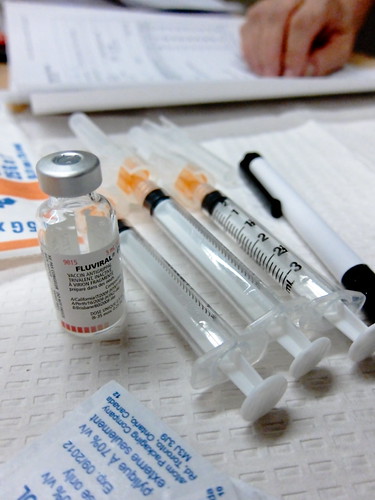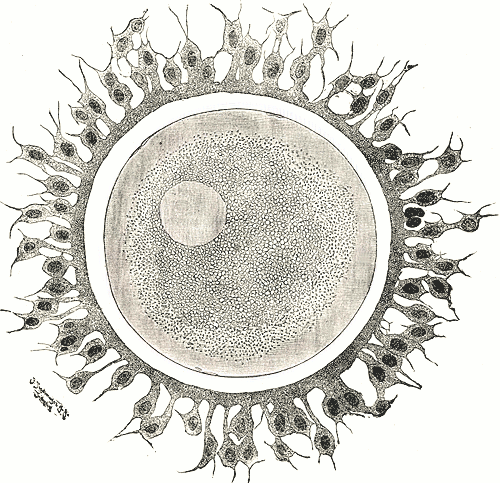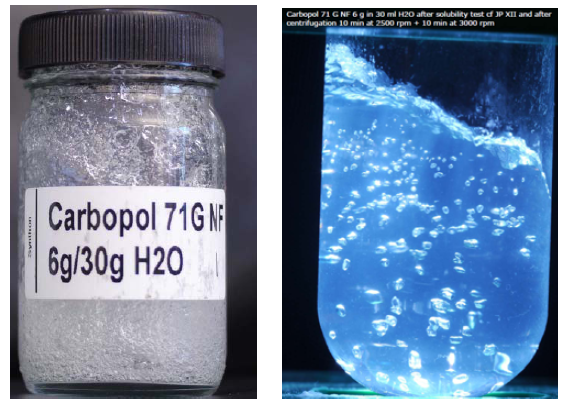Supreme Court of the United States 13 juni 2013, No. 12–398 (Association for Molecular Pathology e.a. tegen Myriad Genetics, Inc. e.a.)
 Met samenvatting van András Kupecz.
Met samenvatting van András Kupecz.
Unaniem heeft de Supreme Court van de Verenigde Staten op 13 juni 2013 besloten dat Myriad geen octrooi voor de BRCA1- en BRCA2-genen kan verkrijgen. BRCA1 en -2 bepalen in belangrijke mate of iemand gevoelig is voor borst- en eierstokkanker. Volgens de Supreme Court hebben de DNA-sequenties (geclaimd als "isolated DNA coding for…") in wezen betrekking op genetische informatie die als zodanig reeds in de natuur voorkomt. Myriad heeft uitsluitend de locatie van de betreffende genen in het menselijk genoom opgehelderd. Hiermee vallen de DNA-claims onder de "laws of nature"-uitzondering op octrooieerbaarheid.
In Europa (wellicht met uitzondering van Duitsland en Frankrijk) geldt - ingevolge artikel 5, lid 2. van de Biotechnologierichtlijn - dat "[E]en deel van het menselijk lichaam dat werd geïsoleerd of dat anderszins door een technische werkwijze werd verkregen, met inbegrip van een sequentie of een partiële sequentie van een gen, vatbaar [is] voor octrooiering, zelfs indien de structuur van dat deel identiek is aan die van een natuurlijk deel." Lid 3 bepaalt voorts dat "de industriële toepassing van een sequentie of een partiële sequentie van een gen concreet [moet] worden vermeld in de octrooiaanvraag. Een DNA-sequentie is dus octrooieerbaar mits de toepassing van die sequentie in de aanvrage staat."
De VS en Europa verschillen na "Myriad" fundamenteel voor wat betreft de octrooieerbaarheid van DNA-sequenties. De Supreme Court bepaalde in dezelfde beslissing echter (ten overvloede) dat cDNA (een speciale, kunstmatige vorm van DNA) en toepassingen van DNA-sequenties wel "gewoon" octrooieerbaar zijn. De gevolgen voor de praktijk zullen dus vermoedelijk te overzien zijn.
A naturally occurring DNA segment is a product of nature and not patent eligible merely because it has been isolated, but cDNA is patent eligible because it is not naturally occurring. Pp. 10–18.
(a) The Patent Act permits patents to be issued to “[w]hoever invents or discovers any new and useful . . . composition of matter,” §101, but “laws of nature, natural phenomena, and abstract ideas” “ ‘are basic tools of scientific and technological work’ ” that lie beyond the domain of patent protection, Mayo, supra, at ___. The rule against patents on naturally occurring things has limits, however. Patent protection strikes a delicate balance between creating “incentives that lead to creation, invention, and discovery” and “imped[ing] the flow of information that might permit, indeed spur, invention.” Id., at ___. This standard is used to determine whether Myriad’s patents claim a “new and useful . . . composition of matter,” §101, or claim naturally occurring phenomena. Pp. 10–11.
(b) Myriad’s DNA claim falls within the law of nature exception. Myriad’s principal contribution was uncovering the precise location and genetic sequence of the BRCA1 and BRCA2 genes. Diamond v. Chakrabarty, 447 U. S. 303, is central to the patent-eligibility inquiry whether such action was new “with markedly different characteristics from any found in nature,” id., at 310. Myriad did not create or alter either the genetic information encoded in the BCRA1 and BCRA2 genes or the genetic structure of the DNA. It found an important and useful gene, but groundbreaking, innovative, or even brilliant discovery does not by itself satisfy the §101 inquiry. See Funk Brothers Seed Co. v. Kalo Inoculant Co., 333 U. S. 127. Finding the location of the BRCA1 and BRCA2 genes does not render the genes patent eligible “new . . . composition[s] of matter,” §101. Myriad’s patent descriptions highlight the problem with its claims: They detail the extensive process of discovery, but extensive effort alone is insufficient to satisfy §101’s demands. Myriad’s claims are not saved by the fact that isolating DNA from the human genome severs the chemical bonds that bind gene molecules together. The claims are not expressed in terms of chemical composition, nor do they rely on the chemical changes resulting from the isolation of a particular DNA section. Instead, they focus on the genetic information encoded in the BRCA1 and BRCA2 genes. Finally, Myriad argues that the Patent and Trademark Office’s past practice of awarding gene patents is entitled to deference, citing J. E. M. Ag Supply, Inc. v. Pioneer Hi-Bred Int’l, Inc., 534 U. S. 124, a case where Congress had endorsed a PTO practice in subsequent legislation. There has been no such endorsement here, and the United States argued in the Federal Circuit and in this Court that isolated DNA was not patent eligible under §101. Pp. 12–16.
Op andere blogs:
IPKat (What one hand gives, the other takes away? A deeper look at Myriad)
IPKat (Are human genes patentable?)
IPKat (Myriad: does it make a difference in the real world?)
IP Watch (US Supreme Court Restricts Gene Patents … A Little)
KluwerPatentBlog (U.S. Supreme Court Holds Isolated Human Genes May Not Be Patented)
Novagraaf (Is een octrooi mogelijk op menselijke genen)
NLO (Uitspraak van het Amerikaanse Hooggerechtshof over de octrooieerbaarheid van DNA)
PatLit (US Supreme Court Rules That Isolated DNA Is Not Patent-Eligible, But cDNA Is Eligible)
 Gewasbeschermingsmiddelenoctrooi. Aanvullend Beschermingscertificaat (ABC)/ Verzoekster GSK vraagt in 2008 in het Verenigd Koninkrijk een ABC aan voor ASO3, een adjuvans waarvoor zij een Europees octrooi hebben, en in 2011 een ABC voor een vaccin dat een antigeen en ASO3 bevat en waarvoor zij ook een Europees octrooi hebben. Beide aanvragen steunen op een door het Europees Geneesmiddelenbureau verleende vergunning voor het in de handel bnengen van Prepandrix, een prepandemisch griepvaccin. Deze stoffen worden omschreven in punt 14 – 16 van de verwijzingsbeschikking. Verweerder, de toezichthouder op patenten, modellen en merken in het VK, wijst de aanvraag af omdat ASO3 (in navolging van arrest van het HvJ EU in de zaak C-431/04 MIT) geen werkzame stof zou zijn in de zin van de ABC-verordening. Ook in Richtlijn 2001/83 zoals gewijzigd bij Richtlijn 2011/62/EU, wordt duidelijk onderscheid gemaakt tussen ‘werkzame stoffen’ en ‘hulpstoffen’.
Gewasbeschermingsmiddelenoctrooi. Aanvullend Beschermingscertificaat (ABC)/ Verzoekster GSK vraagt in 2008 in het Verenigd Koninkrijk een ABC aan voor ASO3, een adjuvans waarvoor zij een Europees octrooi hebben, en in 2011 een ABC voor een vaccin dat een antigeen en ASO3 bevat en waarvoor zij ook een Europees octrooi hebben. Beide aanvragen steunen op een door het Europees Geneesmiddelenbureau verleende vergunning voor het in de handel bnengen van Prepandrix, een prepandemisch griepvaccin. Deze stoffen worden omschreven in punt 14 – 16 van de verwijzingsbeschikking. Verweerder, de toezichthouder op patenten, modellen en merken in het VK, wijst de aanvraag af omdat ASO3 (in navolging van arrest van het HvJ EU in de zaak C-431/04 MIT) geen werkzame stof zou zijn in de zin van de ABC-verordening. Ook in Richtlijn 2001/83 zoals gewijzigd bij Richtlijn 2011/62/EU, wordt duidelijk onderscheid gemaakt tussen ‘werkzame stoffen’ en ‘hulpstoffen’. Met samenvatting van
Met samenvatting van  Uitspraak ingezonden door Willem Hoyng en Geert Theuws,
Uitspraak ingezonden door Willem Hoyng en Geert Theuws,  Octrooirecht. Taste of Nature produceert en verkoop een bepaald type spruit- of kiemplant voor consumptie. Het hof, als kort gedingrechter in appel, vernietigt het eerdere vonnis [
Octrooirecht. Taste of Nature produceert en verkoop een bepaald type spruit- of kiemplant voor consumptie. Het hof, als kort gedingrechter in appel, vernietigt het eerdere vonnis [ Octrooirecht. Biotechnologische uitvinding. Er wordt voortgebouwd op de Brüstle-vragen/beslissing [
Octrooirecht. Biotechnologische uitvinding. Er wordt voortgebouwd op de Brüstle-vragen/beslissing [



 Prejudiciële vragen gesteld door Protodikeio Athinon, Griekenland.
Prejudiciële vragen gesteld door Protodikeio Athinon, Griekenland. 














